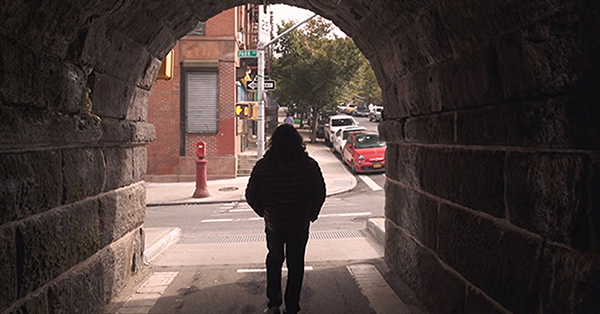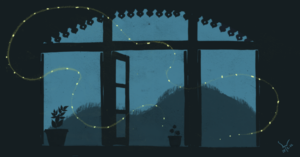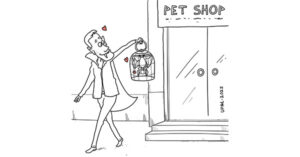Bengali Harlem does not really exist on any map. Filmmaker Vivek Ranjan Bald stumbled upon it by chance when he met comedian and actor Alauddin Ullah. The year was 1999. Alauddin, the son of Bengali immigrants in New York, was doing stand-up comedy and Vivek, a documentary filmmaker, had gone to tape it. Alauddin told Vivek that he wanted to make a film about his late father, Habib. And he told Vivek what he knew about his father’s immigration story.
The Indian migration story to America happened in two chunks. From 1904, many Indian men, mostly from Punjab, went to work in the fields and farms of the American west coast, in states like California. There are still gurdwaras in some small California towns amidst orchards of peach and apricot. Then in 1917, America passed the strict Asian Exclusion Act, which barred immigration from Asian countries. As far as Bald knew, there was no migration of any significance till 1965, when the law changed and the brain drain of doctors and engineers began from countries like India.
“So there was this assumption that there was almost no migration happening between 1917 and 1965,” says Bald. “And that’s exactly the period when Alauddin’s father had come to the US and lived out his life. It was a story different from anything I had heard.”
But it was not a story Alauddin’s father told too often. “I was once eavesdropping when he had some friends over,” says Alauddin. “He said they came by boat. And they snuck into the East side. They were undocumented, living six to seven in a room. And they found jobs as dishwashers or whatever in restaurants.”
He was not the only one. Bald was so intrigued by the story he started researching it to see if Alauddin’s father was just an exception. He ended up getting a PhD and now teaches at MIT. He wrote the book Bengali Harlem and the Lost Histories of South Asian America. He says he found two pockets of early migration, both from rural Bengal, both Muslim men. One was a case of Bengali peddlers from places like Hooghly, who went to New Orleans in the 1890s selling chikan embroidery – shawls, handkerchiefs, bedspreads. America was going through some oriental fascination then – Indian nautch dancers were part of burlesque, tobacco brands had names like Hindoo and the Mardi Gras parade of New Orleans had floats with themes like Hindoo Heaven and Light of Asia. In a few years the immigration doors would shut. ‘These men came to the United States on a thin edge between Indophilia and xenophobia’, writes Bald.
The other set of migrants were people like Alauddin’s father who came from villages in what is now Bangladesh. They worked on British steamships and then jumped ship in ports like New York and Philadelphia. He estimates that the numbers were actually in the thousands over the period of 1910-1940s. Many of them went back and then came again and returned.
But some, like Alauddin’s father, settled down in America and found wives. In New Orleans, some of the peddlers married African-American women. In New York, Alauddin’s father married a Puerto Rican woman and many of his friends did the same. “I would estimate anywhere between 500-1,000 men ended up staying in the New York area, raising families there,” says Bald.

“I didn’t think it odd that I had so many Bengali chachas and Puerto Rican or black chachis,” says Alauddin. “That was the only world I knew. It seemed normal.” He remembers going to the houses of people like Chacha Ibrahim or Chacha Masood. He would have to take off his shoes outside, everyone would say salaam aleikum. “The moment you walked in, the house smelled like basmati,” says Alauddin. But the bedrooms of their children would have pictures of stars like Farah Fawcett or Luke Skywalker. “The living room was Bangladesh, the children’s bedroom was America,” says Alauddin.
Harlem at that time was known as an African-American neighbourhood, but also home to many Asians and Latinos. It was a neighbourhood into which men like Habib could disappear. “It’s important to emphasise that at a time when the United States as a nation had rejected Asian immigrants and criminalised their entry into the country, the neighbourhoods were where they could build lives and create new communities; the African-American and Puerto Rican neighbourhoods,” says Bald.
They built lives and found love. Some of the marriages were just marriages of convenience to get legal papers. But some were lifelong relationships. Those men are gone, but Bald interviewed some of their family members for his documentary In Search of Bengali Harlem. One woman, Ruth Ali, talks about how she married one man for his looks: “I didn’t care where he was from.” Another opened an Indian restaurant with her husband. Seventeen years after he died, this black woman from South Carolina kept running that restaurant. There must have been a love story there.
Alauddin is not the product of such a relationship. His mother is a Bangladeshi immigrant, a much youinger divorced woman who married his father after his father’s first wife, a Puerto Rican woman, had died. Alauddin’s older step brother Habib Jr remembers how they would go to the beach like any other American family. Except while others brought fried chicken, their father would bring curry and rice. He learned the names of uncles and aunts he had never seen in Bangladesh and the names of the villages they lived in, because he was the one who would write the addresses on letters his father – who was not literate – sent home in the long years when he could not travel back.
Though she herself was from Bangladesh, Alauddin thinks being around these tough African-American and Puerto Rican women changed his mother too. They took her under their wings. He remembers her talking about Aretha Franklin’s famous song Respect. “When she went back to Bangladesh and the mullahs told her to cover up, my mother said, ‘I’m not wearing all this. It’s too hot. Let’s go home’,” says Alauddin.
This story is just a small sidebar in the American story of immigration. But it is proof, says Bald, that despite nations and nation states making up borders and rules about who is included and who is excluded, “…people have made lives for themselves that are simultaneously grounded in the the local in their neighborhoods, in their communities, on the one hand, and in the global connections back to the villages and towns where people came from”.
As a community of men, they left behind few traces. The children mostly grew up Christian or Catholic, though the men remained Muslim. Their Bengali Muslim heritage just remained in their surnames. Several years ago, Fatima Shaik, a writer from New Orleans, came to Kolkata trying to track down a village in Hooghly, where her grandfather came from. She didn’t even know the name of the village. But as she got off the plane in Kolkata, she was struck by the heat and humidity. “And the mosquitoes. It was just like New Orleans. My grandfather must have felt at home too,” said Saik.
This story is just a small sidebar in the American story of immigration. But it is proof, says Bald, that despite nations and nation states making up borders and rules about who is included and who is excluded, “…people have made lives for themselves that are simultaneously grounded in the the local in their neighborhoods, in their communities, on the one hand, and in the global, you know, connections back to the villages and towns where people came from”.
Bald says even now in New Orleans, he has had heard of a family that to all appearances is African-American, but when the big family get-together happens, they cook biryani, because they are descended from a chikan peddler from Bengal. Whether that biryani has a potato, I don’t know.




